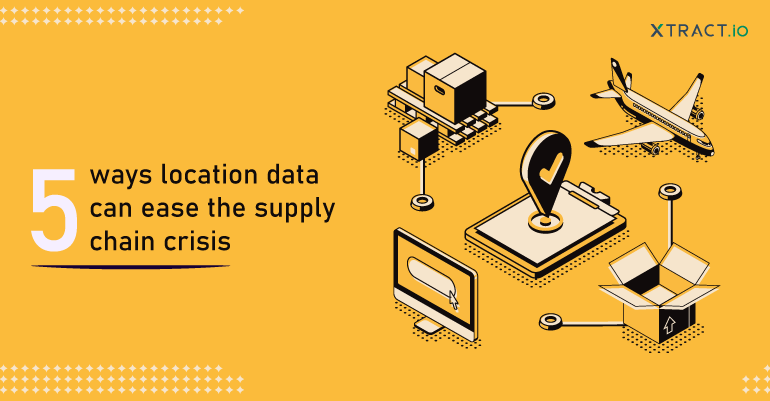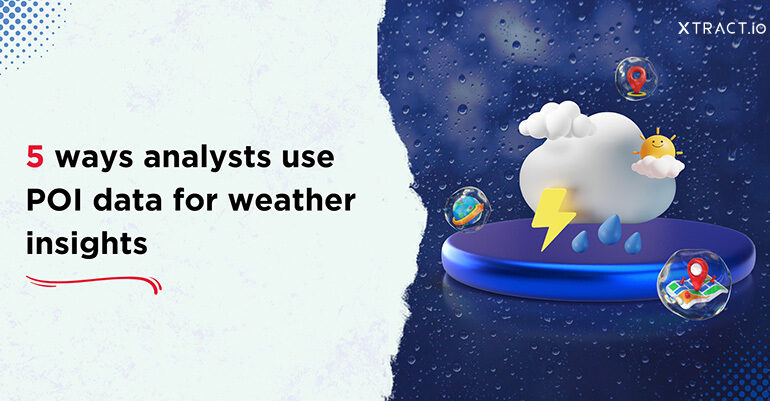More than thousands of factories shut down globally due to the pandemic, and while the companies were recovering from it, new cases have begun to hit the industry. Due to the recent lockdowns, more than 180 companies have faced significant hits in their sales, production, and shipping operations. The global supply chain crisis is real and is worsening due to external factors such as the pandemic and internal factors such as inaccurate location data to visualize the real-time ground picture for deeper insights.
For example, Tesla Inc from Texas could get only 1512 cars manufactured and shipped from the Shanghai plant, compared to 60,000 cars shipped per month due to the 3-week lockdown in Shanghai. This is one of the many scenarios that the companies faced (in pandemic part 1) and are still facing in their supply chain processes. The temporary shutdown of operations and slower production directly impact companies’ sales and revenue.
While the US and UK’s supply chain crisis is likely to last until 2023, it is time to shift gears from traditional sourcing of goods and services to spatially optimized supply chain solutions that link every dot in the current supply chain shortages. Let’s see how location-based data and analytics can help businesses ease in this crisis.
1. Supply chain optimization
Remember when the world was in complete lockdown, there was a shortage of food, medicines, and health facilities in most parts of the world? The global supply chain shortages, backlogs, disruptions, and breakdowns that businesses faced two years ago in their supply chain process have now become the “new normal”. Businesses are adopting new strategies and technologies to keep the flow of goods moving, irrespective of the world’s current scenario.
Location data helps businesses to plan the supply chain process effectively, such as –
- Position facility centers, warehouses, and distribution centers strategically
- Forecast the consumer demand to identify last-mile delivery spots
- Optimize faster and more accessible routes for efficient and increased deliveries
With the right location and POI data from Xtract.io, businesses can minimize the cost in the supply chain process while still increasing customer loyalty and satisfaction levels.
2. Tech platforms and navigation maps
As more and more companies have made their presence online, there is an increase in stiff competition among e-commerce sellers to provide an unrivaled customer experience. Businesses leverage location-based products and in-built maps in their applications so that the customer can track their delivery in real-time. Therefore, businesses need to have accurate and reliable maps.
Recent research has found that around 59.5% of POI records before Covid are outdated and invalid. These data do not match with the ground reality. Thus, incorrect location data would lead to a bad customer experience and business losses. For example, apps with incorrect data may unload raw material to the wrong manufacturer, or wrong ZIP codes could lead to incorrect last-mile delivery to the customer.
3. Demand modeling
With increasing and changing consumer demand, logistics companies must identify the demand at the right location for optimized supply. Businesses use spatial models to determine the demand and sales of a product or good in a specific place.
For example, suppose the demand for dairy products and processed meat is higher in a specific location than in others. In that case, it is advisable to position a cold storage warehouse center around the particular site. This type of modeling will help businesses fulfill the customer demand while reducing the cost and distance to the nearby retailers.
Demand modeling also reduces excess goods production and helps calculate product supply based on the location’s requirements, weather, seasons, etc. Location intelligence with the global supply chain data also help businesses to face the surging demand during peak season such as festive or a specific season. This helps logistic managers and distribution centers to analyze and fulfill the customer’s needs and curb the supply chain crisis.
4. Route optimization
As discussed earlier, new ones have taken the space with many factories and warehouses shut down due to the pandemic. Hence, it is vital to have the digital representation of these new places, such as a warehouse, facility center, production house, etc.
Finding the correct route is essential in all stages of the supply chain process
- Sourcing the raw materials from one location
- Unloading the raw materials to a manufacturing hub in another location
- Packaging and storing the inventory in a data warehouse center
- Moving the finished goods to the point-of-sale (POS) or the end-user.
Location data play a vital role in all these stages. If the transportation driver does not have the right route or the right location to reach, he is likely to spend more time searching for the way. Thereby, increasing the time, effort, and carbon footprint due to the excess travel in searching the location.
In the times such as the pandemic, it is crucial to analyze the location information to determine if the supply chain is functioning normally or not. With the right POI data, create spatially influenced routes for your fleet that reduce the fuel and maintenance cost of the vehicle. Xtract.io, a leading POI data provider, handcrafts accurate POI and Polygon data to help the supply chain process function smoothly and effectively. Access our data to –
- Increase more deliveries or visits to the locations per day
- Reduce incorrect visits or failed deliveries
- Reduce fuel cost
5. Fleet management
Location analytics powered by POI data helps the automotive industry decide where to move their fleet and why. For example, if the business aims to reduce the fuel cost of the fleet, then it must reroute all its fleets to locations where there are fewer vehicles and thus the traffic. Such analysis helps businesses to save money, effort, and time.
Additionally, fleet owners must work towards increasing the life span of the vehicle with the increasing shortage of auto parts and the demand for new vehicles. A fleet’s life span can be increased by analyzing the weather conditions, routes, environment, and traffic in the location that the fleet is moving. Therefore, the right location data of your fleet play a significant role in the supply chain process.
Supply chain and logistic operators of all sectors and sizes require accurate POI and location data to enhance the navigation, procurement, and tracking of goods in supply chain operations. It helps retailers to understand where the risk exists and how to reroute the supplies if a sudden unanticipated event is likely to occur.
At Xtract.io, 6 million location data are helping retailers, automakers, and other sectors make a strategic location-driven decision for their business. Connect with us to get your customized and on-demand POI data.









